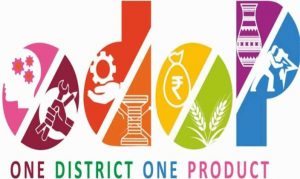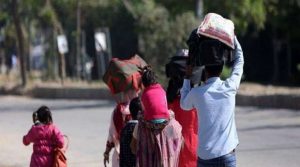Today Current Affairs:8th October 2022 for UPSC IAS exams, State PSC exams, SSC CGL, State SSC, RRB, Railways, Banking Exam & IBPS, etc
Table of Contents
What Is GRAP?

Commission for Air Quality Management (CAQM) has recently said that GRAP will be enforced in Delhi NCR with immediate effect to combat deteriorating AQI in the region.
GRAP:
- A graded Response Action Plan is a set of emergency measures that kick in to prevent further deterioration of air quality once it reaches a certain threshold
- It is based on a plan that was submitted by the Central Pollution Control Board (CPCB) in November 2016.
- The GRAP was first notified in January 2017 by the Ministry of Environment, Forest and Climate Change.
- Stage 1 of GRAP is activated when the AQI is in the ‘poor’ category (201 to 300).
- The second, third and fourth stages will be activated three days ahead of the AQI reaching the ‘very poor’ category (301 to 400), ‘severe’ category (401 to 450) and ‘severe +’ category (above 450)
One District One Product Scheme:

PM Modi calls for giving boost to One District One Product scheme & further develop Aspirational Districts.
- ODOP was launched by the Ministry of Food Processing Industries, to help districts reach their full potential, foster economic and socio-cultural growth, and create employment opportunities, especially, in rural areas.
- This initiative is carried out with the ‘Districts as Exports Hub’ initiative by the Directorate General of Foreign Trade (DGFT), Department of Commerce.
- There may be more than one cluster of ODOP products in one district.
- The States would identify the food product for a district, keeping in perspective the focus of the scheme on perishables.
- The ODOP product could be a perishable Agri produce, cereal-based product, or a food product widely produced in a district and their allied sectors.
- The ODOP launch date is January 24, 2018, by the Uttar Pradesh Government, and due to its success, was later adopted by the Central Government.
Aspirational Districts Programme (ADP):
- Launched in January 2018, it aims to quickly and effectively transform 112 most under-developed districts across the country.
- The ranking is based on the incremental progress made across 49 Key Performance Indicators (KPIs) under 5 broad socio-economic themes – Health & Nutrition, Education, Agriculture & Water Resources, Financial Inclusion & Skill Development and Infrastructure.
Lassa Fever:

A study has found that Climate change may aid the spread of Lassa fever, which is endemic to parts of west Africa, to the Central and Eastern parts of the African continent in the next 50 years.
Findings:
- There would be a 600% jump in the number of people exposed to the virus that causes Lassa fever.
- The number of people at risk of exposure would rise to 453 million by 2050 and 700 million by 2070, up from about 92 million in 2022.
- An estimated 80% of infections are mild or asymptomatic. But the remaining 20 % can cause haemorrhaging from the mouth and gut, low blood pressure and potential permanent hearing loss.
- Temperature, rainfall and the presence of pastureland areas are key factors that contributed to the transmission of the Lassa virus.
- If the virus is successfully introduced and propagated in a new ecologically suitable area, its growth would be limited over the first decades.
Lassa Fever:
- The Lassa fever-causing virus is found in West Africa and was first discovered in 1969 in Lassa, Nigeria.
- The virus is a single-stranded RNA virus belonging to the virus family Arenaviridae.
- The fever is spread by rats and is primarily found in countries in West Africa including Sierra Leone, Liberia, Guinea, and Nigeria where it is endemic.
- Mastomys rats have the potential to spread the deadly Lassa virus.
- The death rate associated with this disease is low, at around 1%.
- A person can become infected if they come in contact with household items of food that is contaminated with the urine or feces of an infected rat (zoonotic disease).
- It can also be spread, though rarely, if a person comes in contact with a sick person’s infected bodily fluids or through mucous membranes such as the eyes, nose or the mouth.
- Symptoms:
- Mild symptoms include slight fever, fatigue, weakness and headache.
NOPEC(No Oil Producing and Exporting Cartels)Bill:

NOPEC bill, the U.S. legislation that could open members of oil producing group OPEC+ to antitrust lawsuits has emerged as a possible tool to tackle high fuel prices.
- NOPEC bill, which passed a Senate committee 17-4 on May 5, is intended to protect U.S. consumers and businesses from engineered oil spikes.
- The bipartisan NOPEC bill would tweak U.S. antitrust law to revoke the sovereign immunity that has protected OPEC+ members and their national oil companies from lawsuits.
- If signed into law, the S. attorney general would gain the option to sue the oil cartel or its members, such as Saudi Arabia, in federal court.
Poverty And Shared Prosperity 2022: Correcting Course

The World Bank released a report titled “Poverty and Shared Prosperity 2022: Correcting Course”.
Findings of the Report:
- Global poverty reduction has been slowing down since 2015 but the Covid pandemic and the war in Ukraine have completely reversed the outcomes.
- By 2015, the global extreme-poverty rate had been cut by more than half.
- Since then, poverty reduction has slowed in tandem with subdued global economic growth.
- As such, the global goal of ending extreme poverty by 2030 would not be achieved.
- In 2020 alone, the number of people living below the extreme poverty line rose by over 70 million; the largest one-year increase since global poverty monitoring began in 1990.
- Given current trends, 574 million people—nearly 7% of the world’s population—will still be living on less than USD 2.15 a day in 2030, with most in Africa.
- The poorest people bore the steepest costs of the pandemic: Income losses averaged 4% for the poorest 40%, double the losses of the wealthiest 20% of the income distribution.
- Global inequality rose, as a result, for the first time in decades.
- Global median income declined by 4% in 2020—the first decline since measurements of median income began in 1990.
Climate Risk Index For Marine Life:

A new study was published titled Climate Risk Index for Marine Life, which captures the climate risk for nearly 25,000 marine species and their ecosystems.
- This new index lays the groundwork for supporting climate-smart approaches to managing and conserving marine life.
Findings
- Warming oceans and climate extremes are driving species into deeper, more northern and cooler locations, altering their behaviour and reconfiguring marine ecosystems in radical and unprecedented ways.
- In the high emissions scenario, the global average ocean temperature will increase by 3-5 degrees Celsius by 2100. Under this scenario, almost 90 % of the 25,000 species are at a “high” or “critical” climate risk. The average species is at risk across 85 % of its geographic range.
- The risk is highest in the subtropical and tropical ecosystems that tend to be biodiversity hotspots and in nearshore ecosystems that support 96% of the global fish catch.
- Top predators like sharks and tunas are at significantly higher risk than species further down the food chain, like forage fishes. Such predators can have massive effects on ecosystem structure and functioning.
- Under high emissions, climate risks for fished species such as cod and lobsters are consistently greater within the territories of low-income nations, where people depend more on fisheries to meet their nutritional needs.
- This represents yet another example of climate inequality wherein low-income countries that have contributed the least to climate change, and are more aggressively reducing their emissions, are experiencing its worst impacts while having the lowest capacity to adapt to them.
- Under a low emissions scenario, average ocean temperatures are expected to increase by 1-2 degrees Celsius by 2100, as per the two degrees Celsius global warming limit in the Paris Agreement.
- Under this future, there is a reduced climate risk for virtually all marine life (98.2 %). The disproportionate risk for ecosystem structure, biodiversity, fisheries and low-income nations are greatly reduced or eliminated.
Nobel Prize In Literature 2022:

The 2022 Nobel Prize in Literature is awarded to the French author Annie Ernaux ”for“the courage and clinical acuity with which she uncovers the roots, estrangements and collective restraints of personal memory”.
- Her more than 20 books, many of which have been school texts in France for decades, offer one of the most subtle, insightful windows into the social life of modern France.
- Personal experiences are the source for all of Ms. Ernaux’s work and she is the pioneer of France’s “autofiction” genre, which gives narrative form to real-life experience.




